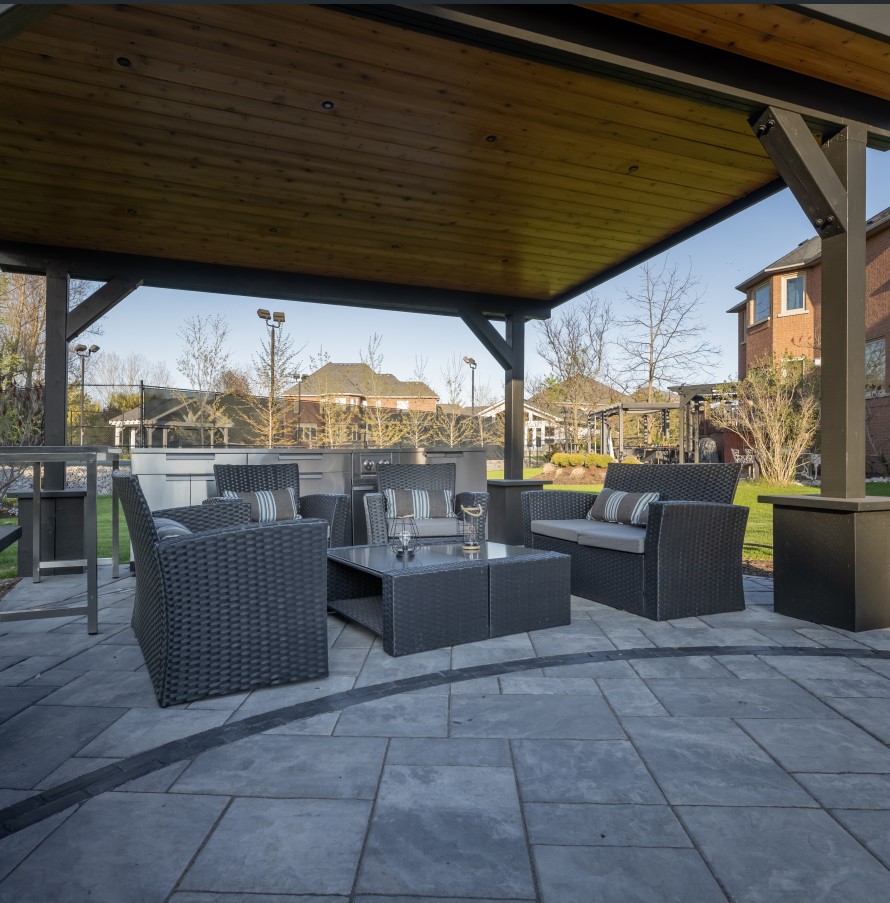When you decide to add or replace an existing driveway, walkway, or patio in your home you will need to choose between interlocking pavers and poured concrete. Which one will be the best for the landscaping at your home?
Backyard interlocking, installed in the form of pavers, are easy to put in and can come in many different shapes and colours. They are durable and easy to maintain. Poured concrete is very durable, can be installed anywhere, and is a very affordable option to install and maintain.
Below we will look at the pros and cons of each to help you decide what is right for your application.
Backyard Interlocking Pavers
Backyard interlocking pavers are a popular choice for many installation projects because they are available in many options and colours. It is also slip resistant and can be used for pool decks. Backyard interlocking pavers are also designed to carry heavy loads and are installed over a bed of gravel which will help with drainage.
Backyard Interlocking pavers are poured from concrete. The gaps between the stones are filled with sand and help prevent the stones from shifting and weeds from growing between the stones. If a stone is damaged it can be replaced. The individual stones are flexible. They resist the cracking found with poured concrete and can be re-levelled if needed.
Disadvantages of Backyard Interlocking Pavers
There are a few disadvantages to backyard interlocking pavers. They have a higher initial cost than poured concrete. Backyard Interlocking pavers may also require cleaning and sealing every year. They also will require the sand between the joints to be periodically replaced.
Backyard interlocking pavers also require more intensive installation. Any cuts during the installation can cause the stones to shift and become loose over time.
Poured Concrete
Poured concrete is a popular option for large areas such as driveways, sidewalks, and patios. Poured concrete is durable and can be used under heavy loads and in all types of weather conditions.
Poured concrete is easy to maintain after it is poured and can remain looking new for many years. It can also be shaped and poured in any application. It can be installed in any shape or size needed for the application. It can also be stamped and stained to fit the appearance you wish to achieve.
Poured Concrete Advantages
A big advantage of poured concrete is the low maintenance cost and needs once it is poured and set. It can withstand harsh winters and the use of de-icing products. If it does become stained, it can be cleaned with a detergent, or even scrubbed and power washed for more difficult stains.
Poured concrete is a more affordable option to install. It can be significantly cheaper than when compared to the price of interlocking and natural stones.
Disadvantages of Poured Concrete
Poured concrete does have a few disadvantages. It is very heavy when compared to other materials which can be a disadvantage in some applications. Poured concrete will require a mould or form when it is installed and can take a long time to fully cure when it is installed. Poured concrete also shrinks and will crack after it is installed.
Conclusion
There are differences in price, durability, and maintenance when choosing between backyard interlocking pavers and poured concrete. The budget for your project and the final look of your installation will be the deciding factors when you are installing either of these materials.
If you are looking for a traditional look, the durability and cost of poured concrete will be your best choice. If you want a unique style, interlocking pavers will offer more flexibility in styles and colours.

